Wolfram Function Repository
Instant-use add-on functions for the Wolfram Language
Function Repository Resource:
Perform bootstrapping of an estimator on some data
ResourceFunction["BootstrappedEstimate"][data,e,n] bootstraps the data data using the estimator e with n bootstrap samples. |
| ConfidenceLevel | Automatic | confidence level to use for confidence intervals |
| SignificanceLevel | Automatic | significance level to use for confidence intervals |
| "Samples" | Automatic | number of samples in each bootstrap |
Bootstrap the mean of a randomly created dataset:
| In[1]:= | ![SeedRandom[1234];
r = RandomVariate[NormalDistribution[2.1, 1.25], 100];
ResourceFunction["BootstrappedEstimate"][r, Mean, 1000] // Dataset](https://www.wolframcloud.com/obj/resourcesystem/images/3a9/3a9cce39-d557-461f-aed7-6d934f0b330c/78102cbab3b118d4.png) |
| Out[3]= | 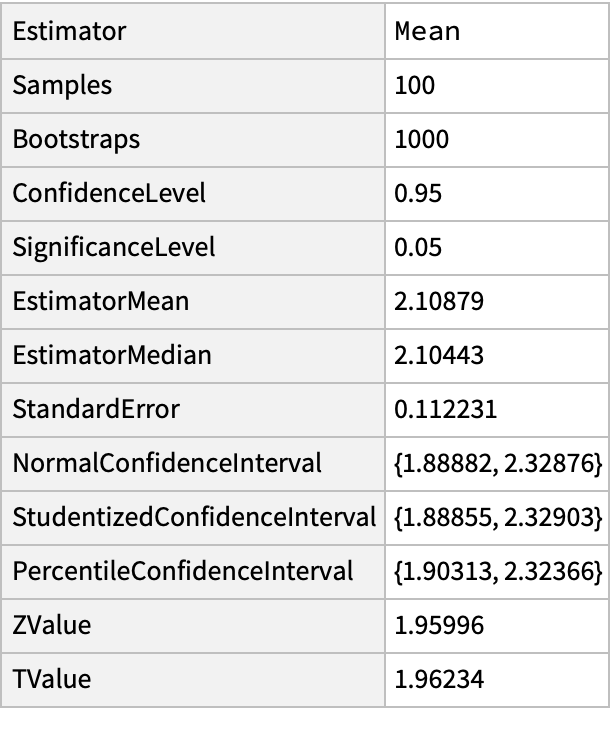 |
Find the Kurtosis and report back the confidence interval corresponding to a 99% confidence level:
| In[4]:= | ![SeedRandom[1234];
r = RandomVariate[NormalDistribution[2.1, 1.25], 100];
ResourceFunction["BootstrappedEstimate"][r, Kurtosis, 1000, ConfidenceLevel -> 0.99] // Dataset](https://www.wolframcloud.com/obj/resourcesystem/images/3a9/3a9cce39-d557-461f-aed7-6d934f0b330c/1afcdc7655d73439.png) |
| Out[6]= | 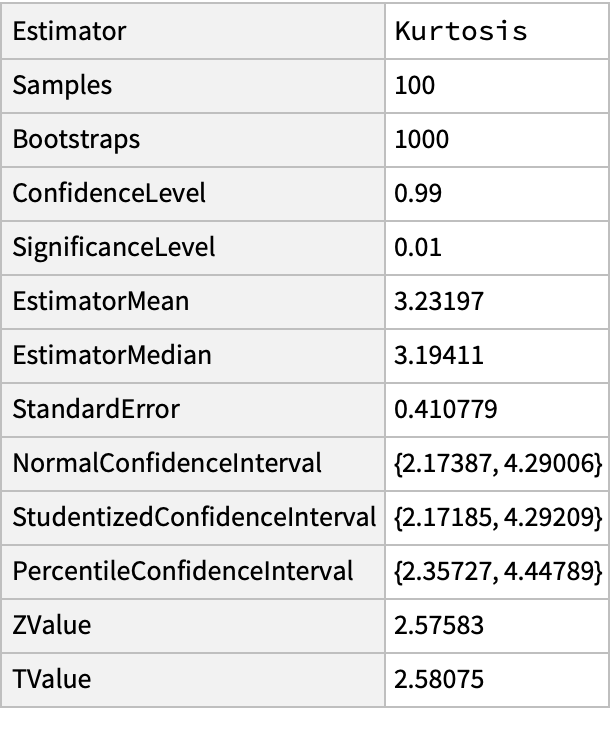 |
Use a higher number of samples for each bootstrap:
| In[10]:= | ![SeedRandom[1234];
r = RandomVariate[NormalDistribution[2.1, 1.25], 100];
ResourceFunction["BootstrappedEstimate"][r, Skewness, 1000, "Samples" -> 1500] // Dataset](https://www.wolframcloud.com/obj/resourcesystem/images/3a9/3a9cce39-d557-461f-aed7-6d934f0b330c/0407004d8c4041df.png) |
| Out[12]= | 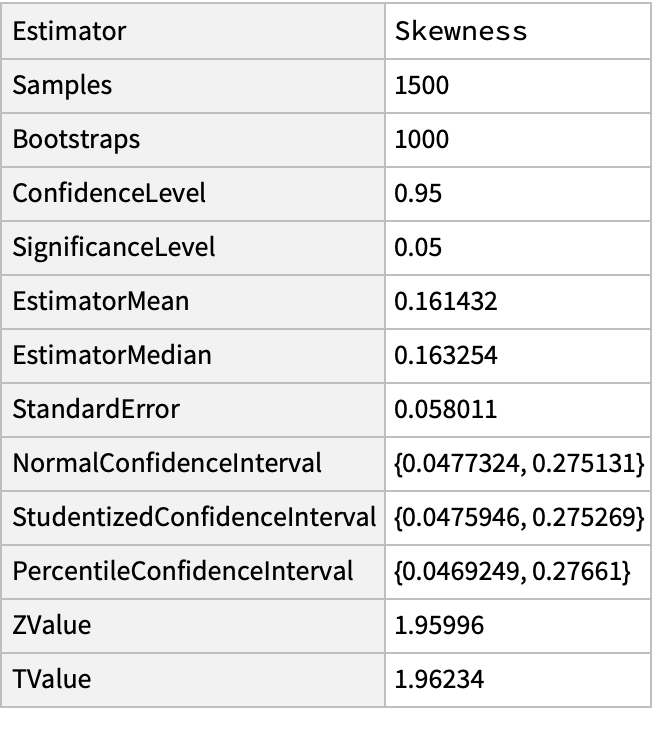 |
Create a random dataset:
| In[13]:= | ![SeedRandom[1234];
x = RandomReal[{-10, 10}, 50];
y = 3 x + 8 + RandomVariate[NormalDistribution[], 50];
data = Transpose[{x, y}];
ListPlot[data]](https://www.wolframcloud.com/obj/resourcesystem/images/3a9/3a9cce39-d557-461f-aed7-6d934f0b330c/33f3b59b24685cf0.png) |
| Out[14]= | 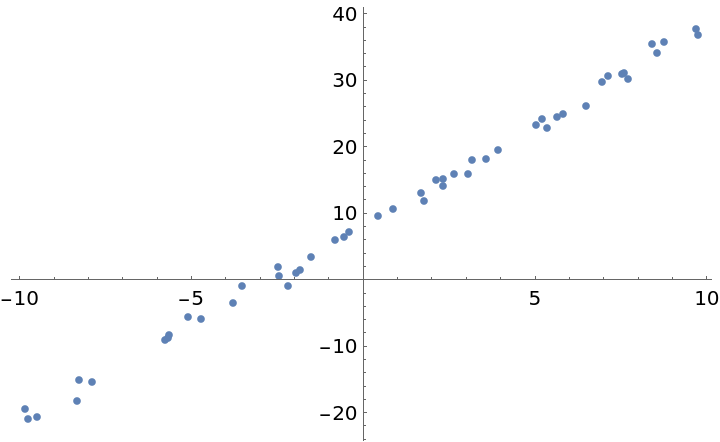 |
Perform bootstrapping on the slope by doing repeated linear fitting:
| In[15]:= |
| Out[15]= | 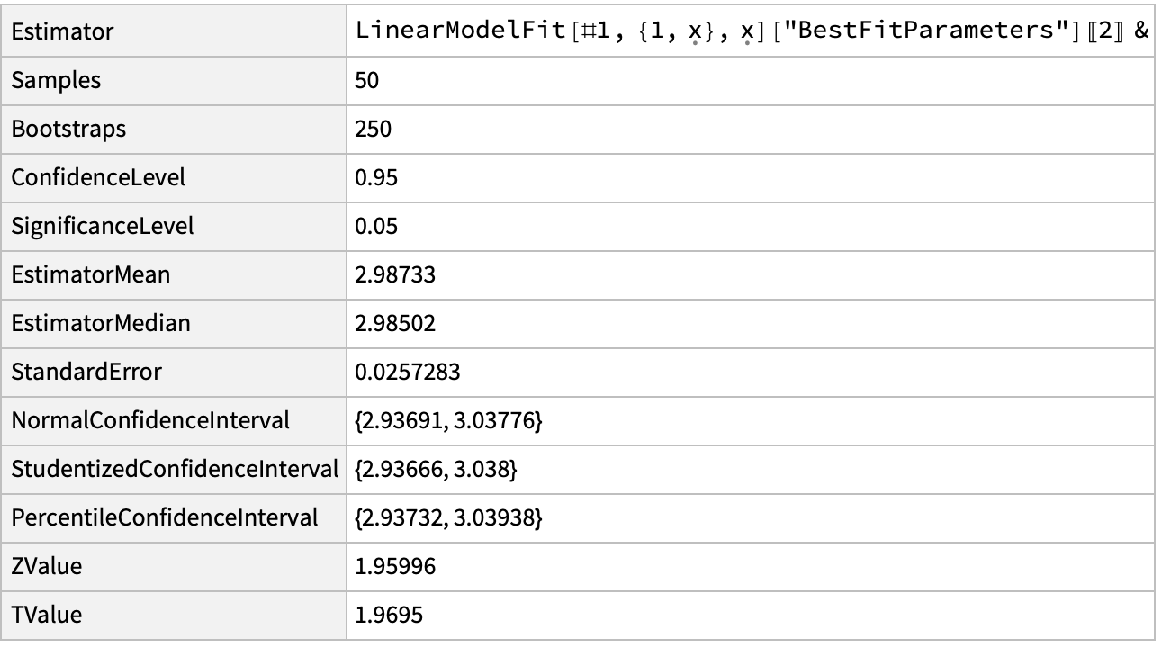 |
This work is licensed under a Creative Commons Attribution 4.0 International License